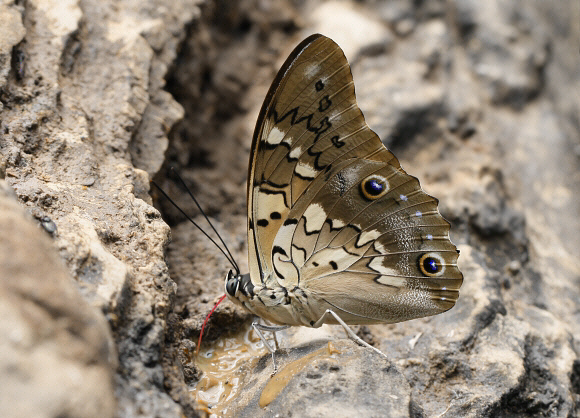
Introduction
The Charaxinae are a group of robust, medium to large Nymphalids characterised by having a rapid and powerful flight, stout bodies, and a habit of feeding at dung and carrion. They are represented in Africa by Charaxes, Palla and Euxanthe, in the Oriental and Australian regions by Charaxes and Polyura; and in the neotropics by genera including Consul, Memphis, Fountainea, Agrias, Prepona, and Archaeoprepona.
Archaeoprepona and Prepona are very similar on the upper surface, being chocolate brown with bands of dazzling blue or turquoise. The 2 genera can be distinguished by examining the underside hind-wings – in Archaeoprepona there is a tiny submarginal ocellus in each cell, but in Prepona the ocellus near the apex, and the one near the tornus, are both greatly enlarged. Another difference is that Prepona males have tufts of yellow androconial scales on the upper surface of the hind-wings, whereas in Archaeoprepona these are black. Both genera are noted for their red proboscises.
There are 7 species in Prepona and 8 in Archaeoprepona.
Prepona pylene is found throughout the Amazonian region from Honduras to Paraguay. Subspecies eugenes is restricted to the foothills of the eastern Andes in Colombia, Ecuador and Peru.
Habitats
This species is found in rainforests at altitudes between about 400-1000m.
Lifecycle
I have no data regarding the lifecycle of pylene. The larval foodplants of other Prepona species include Andira (Fabaceae) and Inga (Mimosaceae).
Adult behaviour
The butterflies have an agile and very powerful flight, and are only active in hot sunny conditions.
Both sexes commonly feed at sap runs and at rotting fruit. Males also imbibe mineralised moisture from damp soil or sand, and sometimes visit carrion or dung on the forest floor.
Males often sit facing head-downwards and with wings half open, on narrow tree trunks at heights between about 2-4 metres, and from this position watch for potential mates. Females tend to spend most of the time in the canopy.
